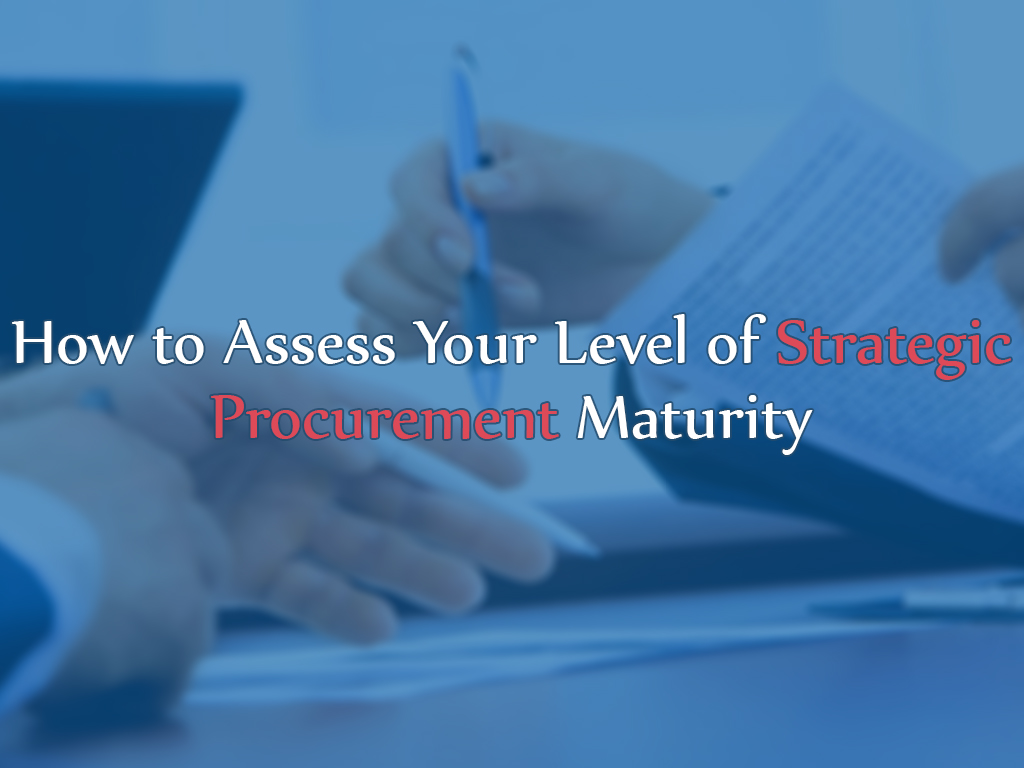ARTICLE REPRINTED
A Dynamic Field
Procurement’s increasing importance is being driven by two economic changes:
•Increasing competitive pressures are forcing companies to look at procurement as a means of helping boost the bottom line. CEOs are looking for areas to cut costs, and streamlining procurement processes is a viable solution.
•A lot of companies are doing more outsourcing. This makes procurement decisions increasingly important to business vitality.
There are numerous ways an effective procurement strategy improves performance, including:
•Eliminating maverick spending.
•Streamlining operations.
•Improving supplier relationships.
•Increasing bargaining power with suppliers.
•Strengthening supplier relationships.
•Aligning purchasing decisions with corporate goals and objectives.
How Mature Are You?
Measuring an organization’s procurement maturity involves assessing how close it is to achieving each of the aforementioned results. There are four levels of maturity: novice, intermediate, advanced, and expert. There is no relationship between company size and procurement maturity. Companies of all sizes are at various stages in the development of their procurement functions.
Maturity Assessment Guide
1.Evaluate maverick spending in the IT department. Talk to supervisors and find out if unauthorized purchases are being made. If so, what kind of purchases? You may be shocked by the number of purchases occurring outside of formal procurement protocols. On the other hand, with no protocol in place, expect excessive amounts of maverick spending. Procurement maturity is typically characterized by the following levels of maverick spending:
- Level 1: Significant maverick spending.
- Level 2: Minimal maverick spending.
- Level 3: Virtually no maverick spending.
- Level 4: No maverick spending.
2.Examine your procurement processes and procedures. Find your written set of procedures detailing the procurement processes for your company. If there is no documentation, does your company follow repeatable procedures? Or does each purchase result in an ad-hoc patchwork of steps? Procurement maturity is typically characterized by the following levels of procurement procedures:
- Level 1: No processes or procedures.
- Level 2: Processes and procedures exist, but are not documented.
- Level 3: Processes and procedures are documented and implemented.
- Level 4: Major procurement decisions are determined by a multi-function team.
3.Evaluate your relationship with suppliers. Look beyond your internal procurement processes and focus on how well you know your suppliers. Typically, the more information you have about the people you do business with, the better the relationship. With no purchase information on hand, you cannot develop a partnership with suppliers and service providers. With proper information, you can evaluate and rank suppliers.
Your procurement maturity level relates to your supplier relationships as follows:
- Level 1: No purchase information on record; need to ask suppliers for it.
- Level 2: Use supplier information to evaluate price, quality, and delivery.
- Level 3: Rank suppliers and develop strong relationships with select suppliers.
- Level 4: A supplier’s percentage of business correlates with performance ranking.
4.Assess your bargaining power. Information also provides you with purchasing leverage. To what degree do you leverage information about suppliers to increase spending power? Do you coordinate purchases to increase leverage? Does your company possess strong negotiating skills? Your procurement maturity level is characterized by your ability to leverage spending power:
oLevel 1: Company spending power is not leveraged.
oLevel 2: Major purchases are negotiated and coordinated to increase leverage.
oLevel 3: All purchases are coordinated and leveraged.
oLevel 4: Supplier’s cost-reduction ideas are brought to your company first.
5.Determine procurement’s strategic alignment. Experienced buyers understand the overall corporate strategy and the procurement strategy. How many of your buying decisions are viewed as strategic decisions? Do you have a strategic plan in place? Procurement’s strategic alignment relates to maturity as follows:
- Level 1: No strategic plan governing procurement.
- Level 2: Although no strategic plan exists, purchases are strategically relevant.
- Level 3: Virtually all purchases are aligned with corporate strategy.
- Level 4: Perfect alignment with company goals and objectives.
6.Evaluate your buying experience. Do your buyers receive training? Do they understand the strategic relevance of buying decisions? Do they know how to apply cost accounting to a negotiation? For example, do they know the difference between direct and indirect costs, as well as overhead? Your procurement maturity level with respect to buying experience is characterized as follows:
- Level 1: Limited buying experience; no training.
- Level 2: Buyer training program is in place.
- Level 3 & 4: Buyers understand strategic buying and the importance of cost.
Article Source: http://EzineArticles.com/4085000







